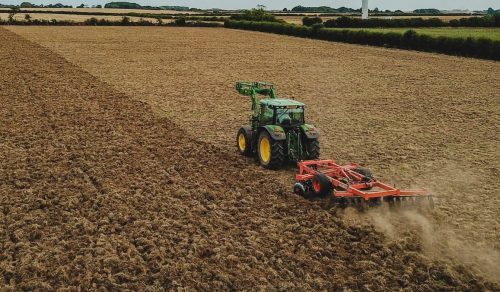Broad bean, information about crop management
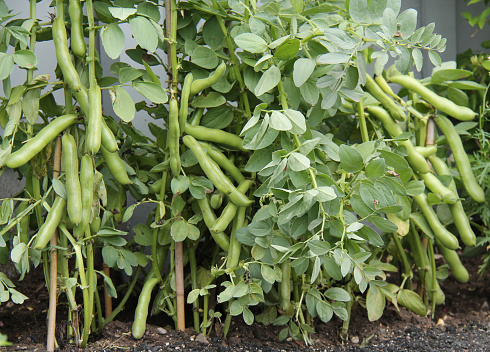
The broad bean is part of the tribe Vicieae, genus Vicia. The seeds of this plant are used in various forms in human nutrition, but also in animal feed in certain proportions, in combination with other fodder. The whole plant can also be used as green manure or as silage fodder.
BOTANICAL CHARACTERISTICS
The root is type II, with a well-developed main taproot and many ramifications. More than 75% of the nodes are formed up to a depth of 12 cm.
The stem is fistulous, with 4 edges, 100-150 cm high, poorly branched.
The leaves are pinnate, with 2-3 pairs of large, elliptical leaflets. The stipules have an ovoid-lanceolate shape, they are large and often with extrafloral nectary secretions, and therefore, they are often attacked by aphids.
The broad bean flowers are grouped by 3-6 in racemes, and the flowering percentage is between 11-20%, being dependent, especially on the climatic conditions during the blooming period. Pollination is characterized by autogamy, but allogamy is also frequent.
The fruits (pods) are 5-10 cm long and turn black when ripe. Of the formed pods, only 66-67% reach maturity, and the rest fall after pollination. In the pod, there are 3-5 seeds of different shapes and sizes.
For the medium-sized bean, the vegetative growth period is approximately 130 days, of which 50 days from sowing to flower emergence. Then another 20 days until pod formation and another 60 days from pod formation to maturity. The growing season is shorter in dry years with higher temperatures.
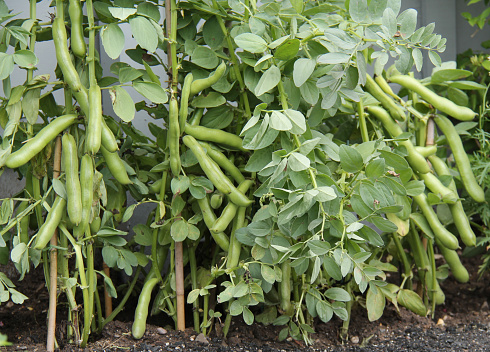
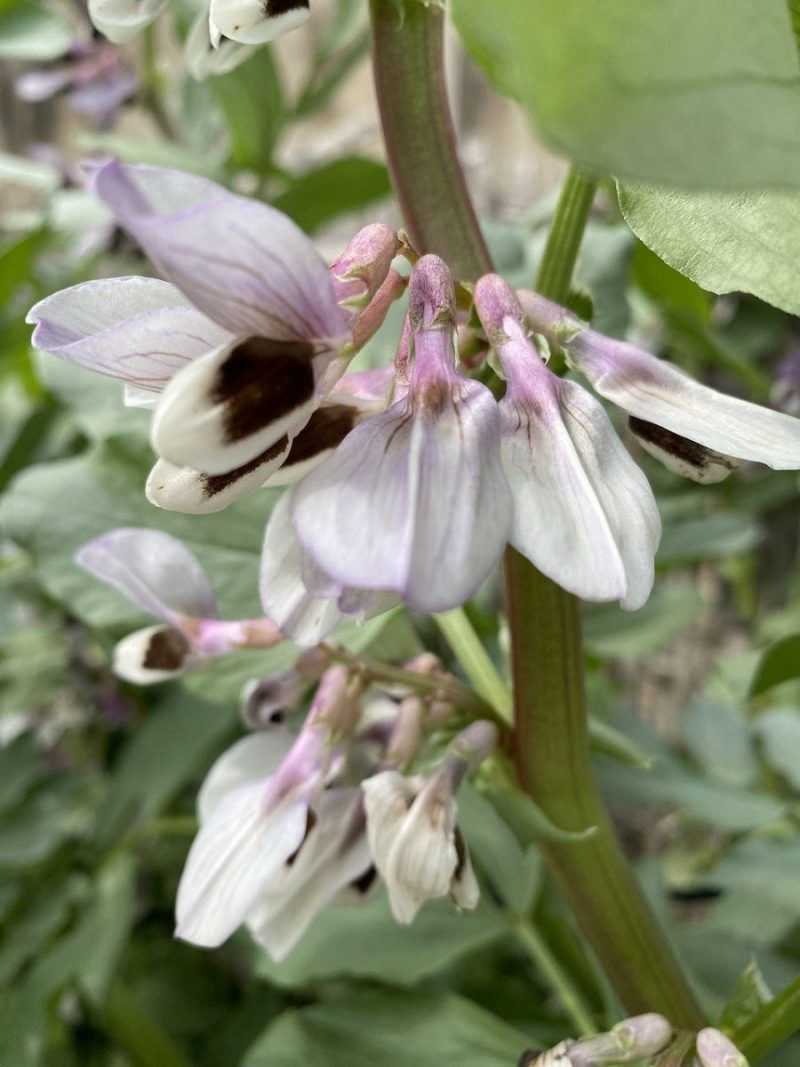
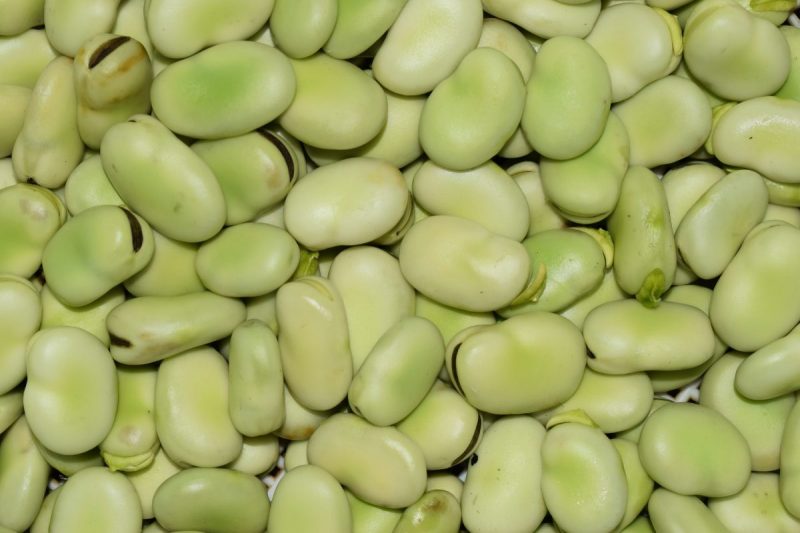
CLIMATE AND SOIL REQUIREMENTS
Temperature
The broad bean needs a humid and cool climate, the sum of degrees being approximately 1800 °C, according to certain research. The broad bean plant can withstand frosts of up to -5 °C, and during the vegetative growth period, it needs moderate temperatures. In the flowering phase, the optimum is 15-20 °C.
Humidity
It has high water requirements, as the plant is sensitive to drought, especially during flowering (which causes the flowers to fall). In dry areas, there is a stronger aphid attack, which leads to a significant decrease in production.
Soil
It prefers fertile, loamy soils, with a neutral or slightly alkaline pH. If the pH is below 6, the plant suffers, and production is lower. It can also grow on heavier, clayey, and moister soils, only if they are structured. It can be cultivated on sandy soils, but only if the groundwater is about 1 m deep or if the rainfall rate is abundant.
CULTIVATION TECHNOLOGY
Except for legumes, broad bean can be sown after any crop, and any crop (except legumes) can be grown after broad bean.
Fertilizing
Broad bean reacts well when fertilized with phosphorus, potassium, and sometimes with nitrogen. Also, yield increases have been obtained by fertilizing with microelements, e.g. boron, copper, molybdenum, etc., on soils deficient in these elements. Thus, specific fertilizers can be applied, and the doses should be determined following agrochemical soil analyses.
Recommended products
-
You can find products on a different store
Change Store -
You can find products on a different store
Change Store -
You can find products on a different store
Change Store -
You can find products on a different store
Change Store -
You can find products on a different store
Change Store -
You can find products on a different store
Change Store -
You can find products on a different store
Change Store -
You can find products on a different store
Change Store -
You can find products on a different store
Change Store -
You can find products on a different store
Change Store -
You can find products on a different store
Change Store -
You can find products on a different store
Change Store -
You can find products on a different store
Change Store -
You can find products on a different store
Change Store -
You can find products on a different store
Change Store -
You can find products on a different store
Change Store -
You can find products on a different store
Change Store -
You can find products on a different store
Change Store -
You can find products on a different store
Change Store -
You can find products on a different store
Change Store -
You can find products on a different store
Change Store -
You can find products on a different store
Change Store -
You can find products on a different store
Change Store -
You can find products on a different store
Change Store
Soil works
Should be carried out immediately as soon as the land has been cleared by the previous crop. Depending on the previous crop, stubble tillage can be carried out, the purpose of which is to shred the weeds, the vegetable remains, and the surface layer of the soil.
Plowing should be done as soon as possible, at a depth of 25-30 cm. In the spring, the land must be worked as early as possible, but only after the water has drained at a great depth, to avoid excessive soil compaction. The soil works must be adapted according to the previous crop.
Seeding and sowing
Seeds must have a purity of more than 97% and germination of more than 85%. Sow as early as possible when the soil temperature is 4-5°C. For germination use the snow humidity.
The sowing density is 40-60 plants per square meter.
The sowing depth is 6-8 cm, depending on soil moisture and texture.
For sowing the seed rate is 180-220 kg/ha or 250-300 kg/ha, depending on the variety.
CARE WORKS
The care work consists of destroying the crust (before and after sprouting) and controlling the weeds and pests. Thus, after the plants are 10 cm, 2-3 mechanical hoeings should be carried out, supplemented by manual weeding.
Weed control can be done by applying specific herbicides, and the pests that can affect the broad bean crop, namely the broadbean weevil (Bruchus rufimanus), the black bean aphid (Aphis fabae), as well as other pests, can be controlled using specific insecticides.
HARVESTING
Harvesting can be done in two steps, because the beans ripen in stages. Thus, harvesting is done when ⅔ of the pods are mature – the plants are cut, and after 2-4 days (after they have dried) they are threshed. Also, harvesting can be done directly with the combine, when 90% of the seeds have reached maturity, making the necessary adjustments to harvest the broad bean.















































































































































































































































































































































































































































